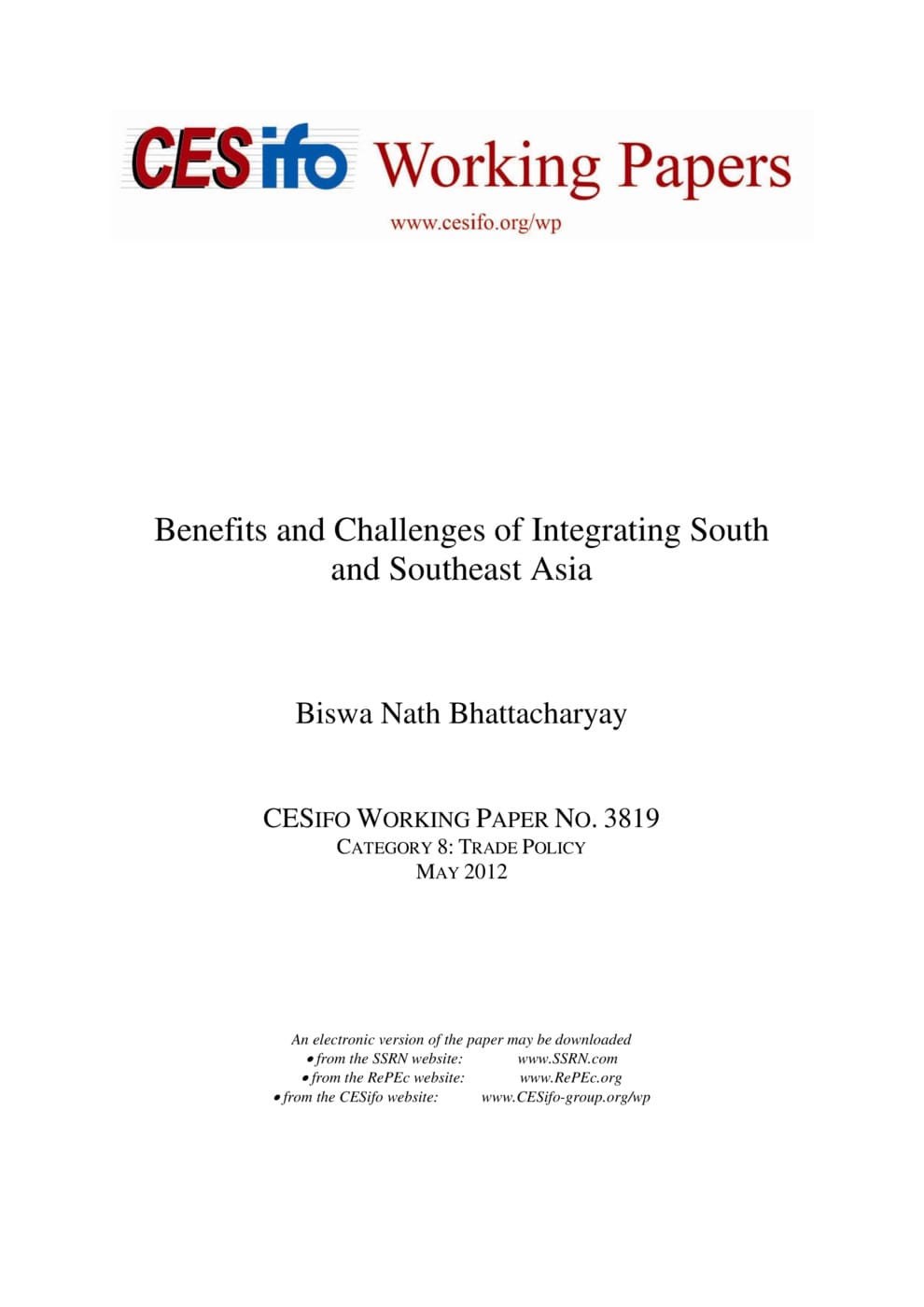Benefits and Challenges of Integrating South and Southeast Asia
CESifo, Munich, 2012
CESifo Working Paper No. 3819

In recent decades, Southeast Asian economies have prospered through an outward-oriented strategy, through intra-regional integration under the Association of the Southeast Asian Nations (ASEAN) initiative and through participating in the East Asian production networks. In the 1970-80’s, South Asia stagnated due to its inward-oriented growth strategy and lack of infrastructure connectivity—resulting in low trade integration and regional connectivity within the region and with Southeast and East Asia. However, since 1991, South Asia, particularly India has adopted a “Look East” policy and opened its market raising huge potential for economic integration between South and Southeast Asia leading to peace, prosperity and stability of these two regions. This paper examines the prospects and challenges of enhancing trade, investment, production and infrastructure cooperation and integration between these two regions for catalyzing their socio-economic transformation. It also examines the trends, achievement drivers, and prospects of economic growth and developments of these regions until 2030. The paper also provides policy recommendations for enhancing regional cooperation and integration. In view of global financial crisis of 2008 and ongoing European debt crisis, advance economies that are principal export markets of South and Southeast Asia economies may witness slow growth and even in recession in short term. Further integration of these two regions will generate increased intraregional trade and reduce their dependence of advanced economies.
Trade Policy
Fiscal Policy, Macroeconomics and Growth
Energy and Climate Economics